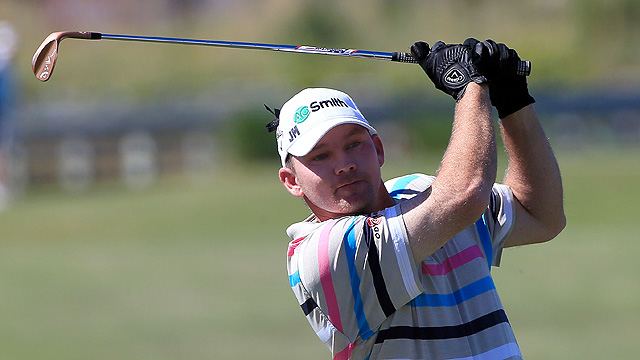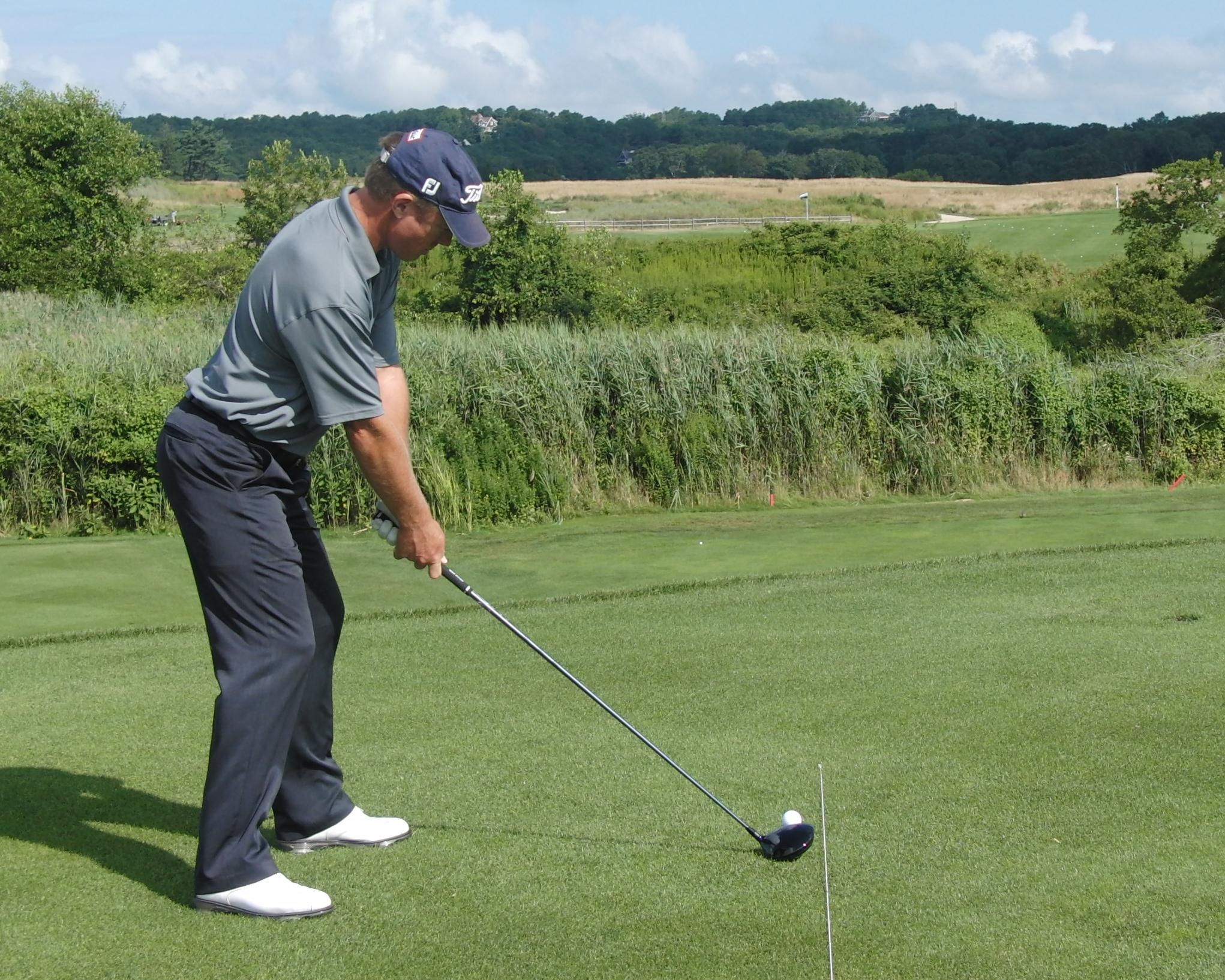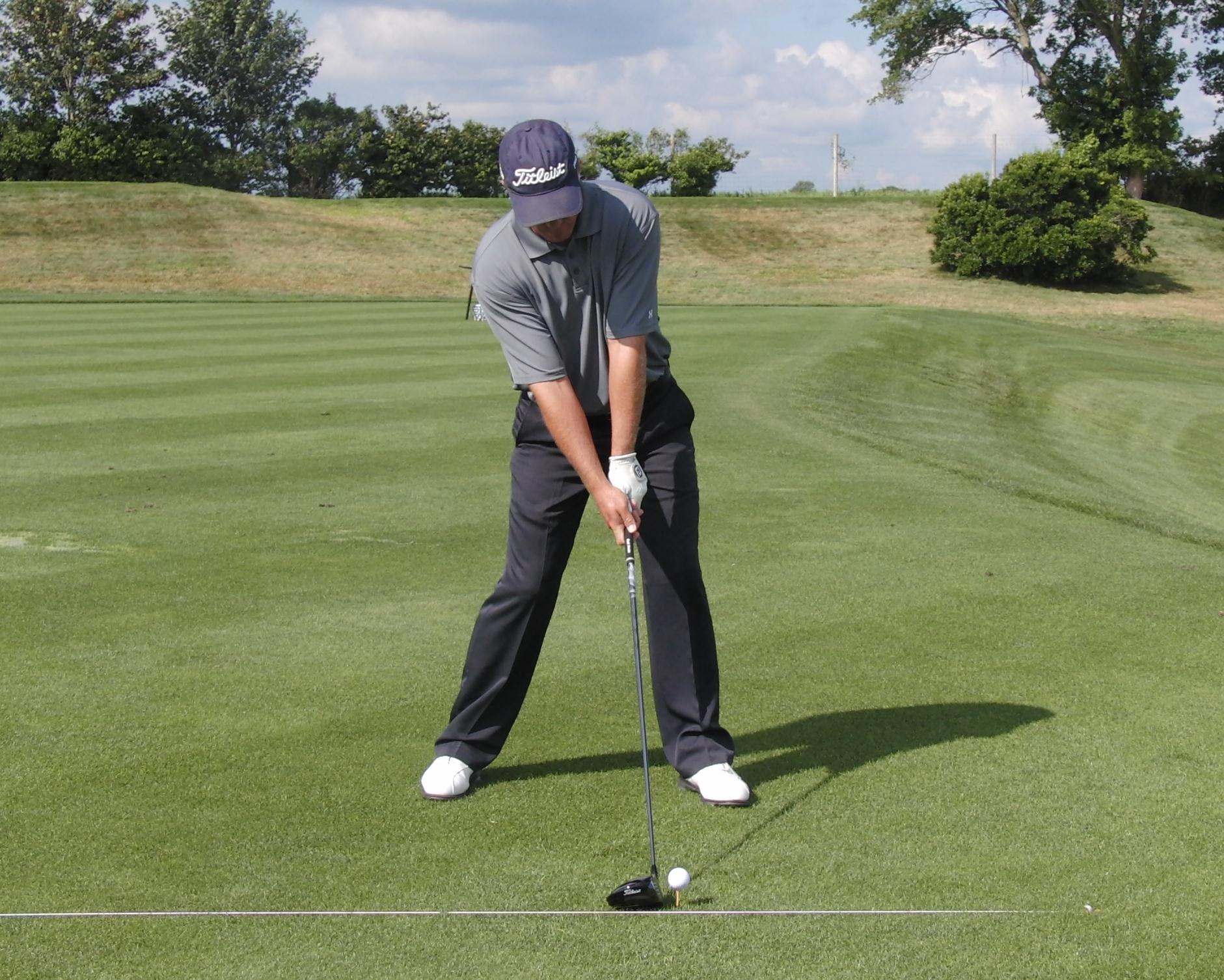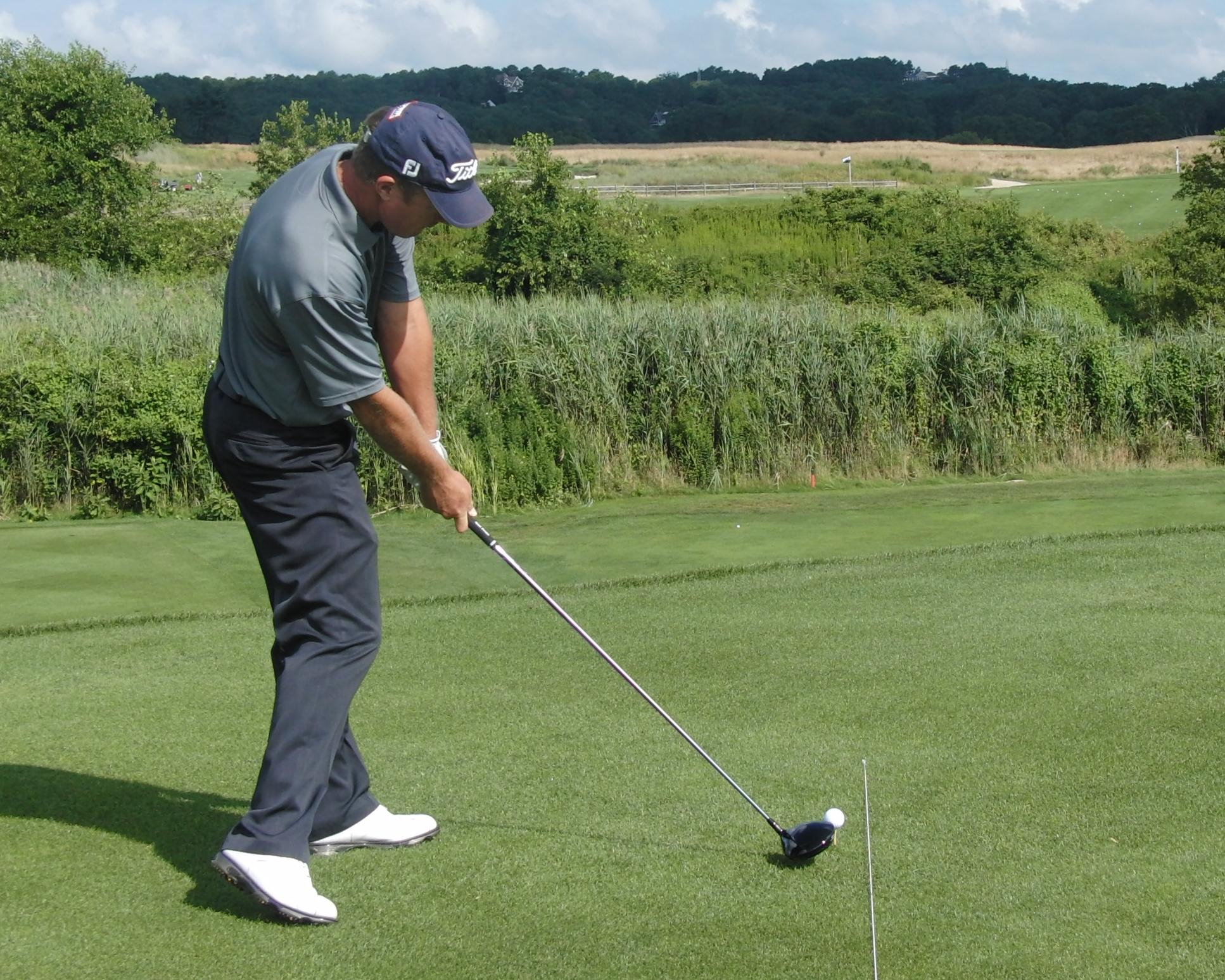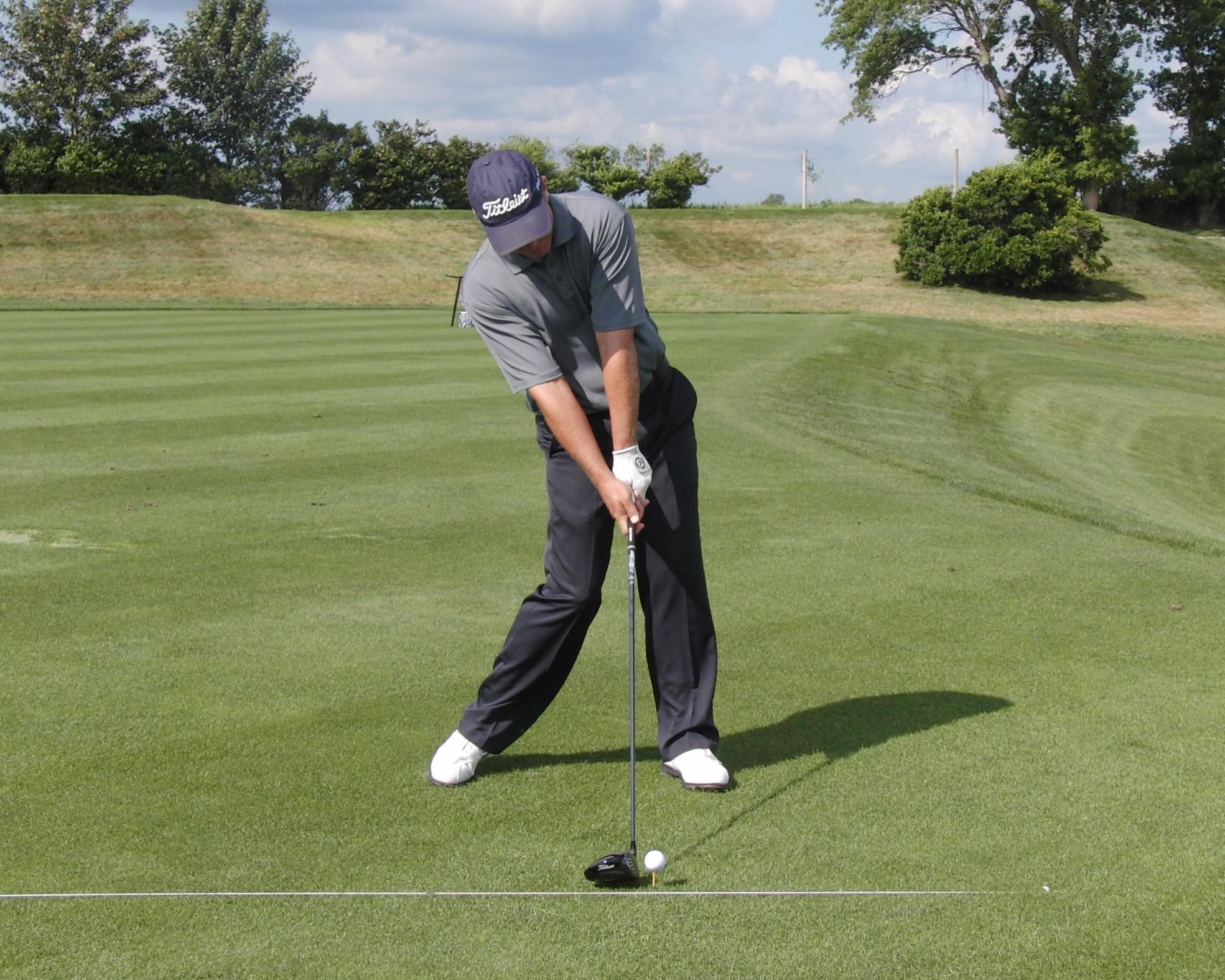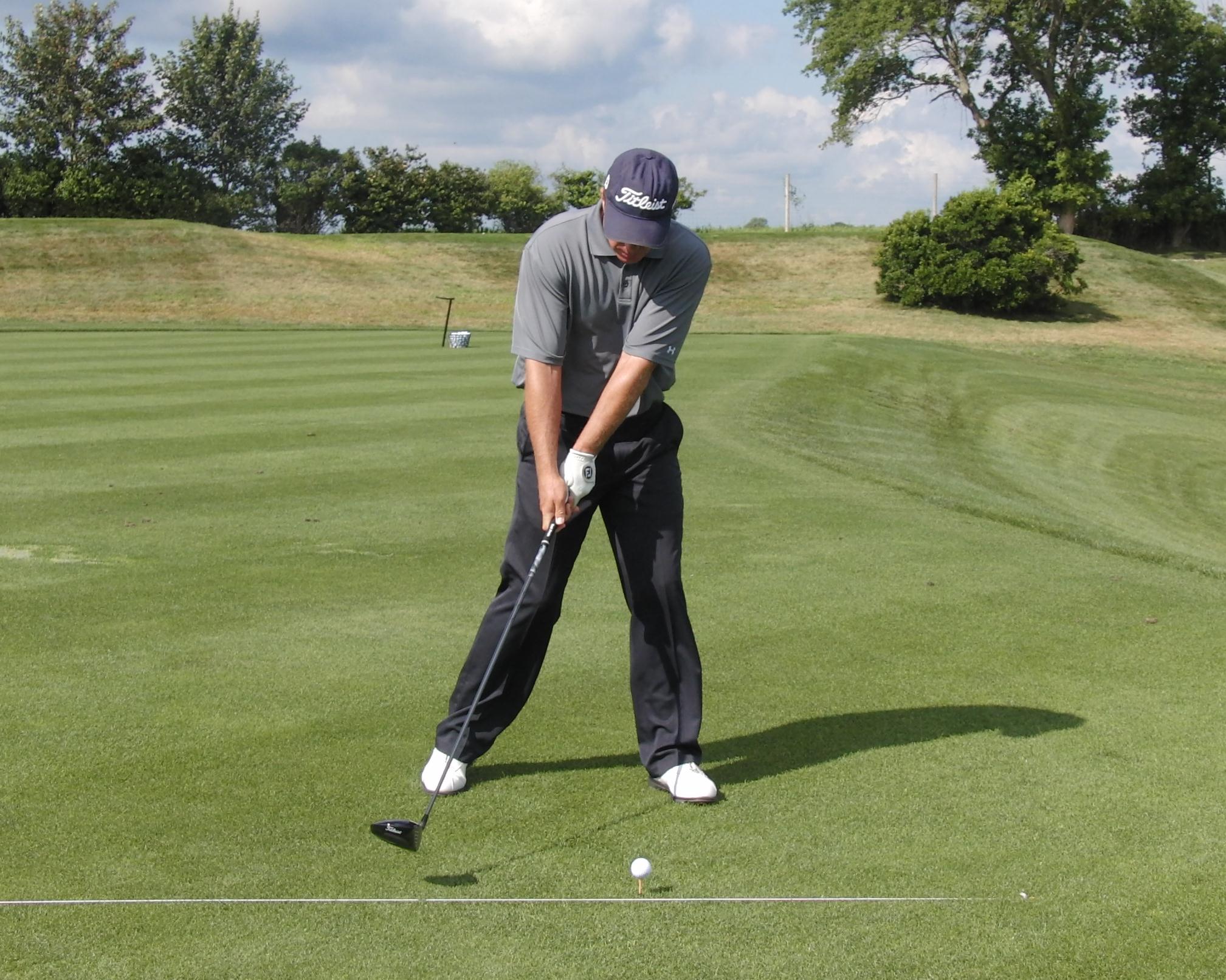Golf Impact Errors
/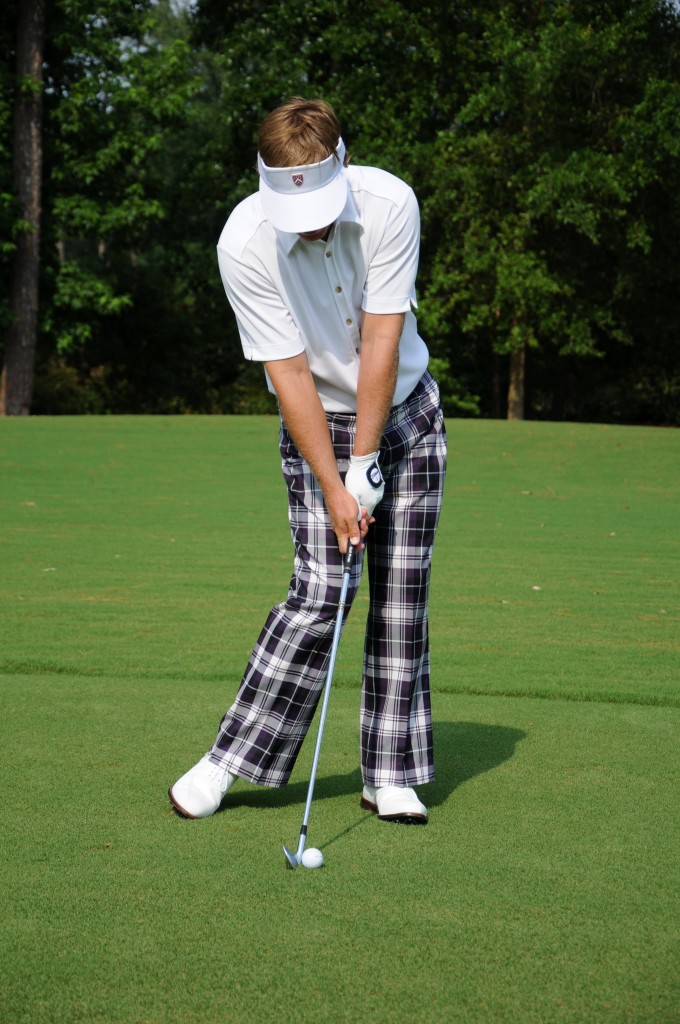
Impact is the most important part of the golf swing! The ball spends an average of 1/2000 of second on the face of the club, yet it is during this time that it receives it's all-important travel itinerary. How high; how far; what curvature; spin rate; and ultimately what destination is all determined in that fraction of a second.
The above picture is an ideal impact position.
-
The weight is comforably on the front foot
-
The handle is leading the clubhead into the ball and the clubhead is travelling slightly down for a ball-first, divot-second strike
-
The head is over the ball with the weight in front of the ball leading to body curve
There are only three errors a golfer can make at impact and here they are:
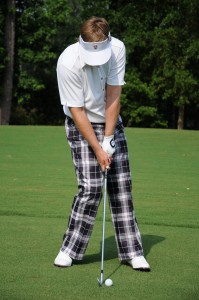
In this example the head has worked back behind the ball too much and the weight remains on the back foot. This golfer scoops the ball off the turf and tends to hit weak, high fades and slices with the occasional pulled shot. Should a divot occur it is most often before the ball is impacted. This is a typical what I would call "weekend warrior" swing.
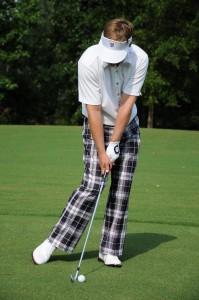
In this example the golfer has found a way t0 "squeeze" the ball and actually strike it fairly well, however, due to the upper body being positioned in front of the ball, direction is a major challenge. Divots are quite deep and this golfers' tendencies will be to hit pull draws with the occasional push or flare. There is not enough body curve in this mid-level impact position.
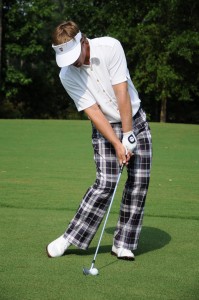
This impact position is invariably the demise of the better golfer. Here the golfer has found a way to attack the ball from the inside while still delivering a downward blow to the ball, yet there is too much of a good thing. The head hangs back while the hips drive to the target, dropping the clubhead too far to the inside and encouraging the hands to flip through impact. This golfer will tend to play well with good timing, but should things get nervy they will hit blocks and quick, sweeping hooks.
Analyze your shot pattern on the golf course and start to get an idea as to which of the above categories you fall into. Get in front of a mirror and work towards improving or tempering certain elements of your impact position. As you do this remember feel is very seldom real when it comes to golf. Create the correct look in the mirror and then absorb what that 'look' feels like and take that out to your next practice session.
Additional Resources:


